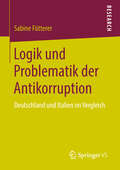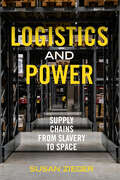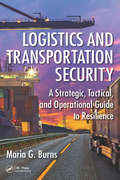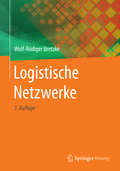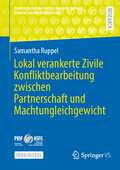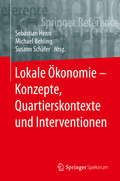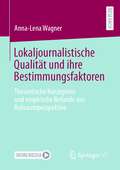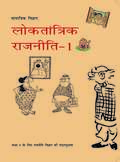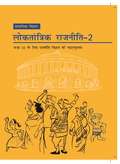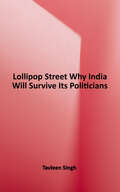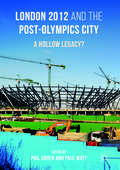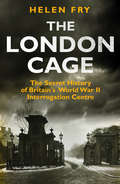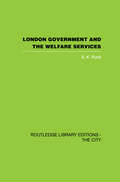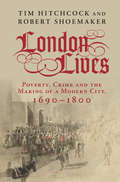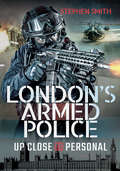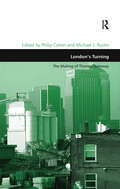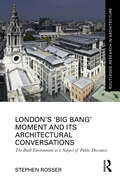- Table View
- List View
Logics of Socialist Education
by Zsuzsa Millei Tom G. GriffithsFor some, socialism is a potent way of achieving economic, political and social transformations in the twenty-first century, while others find the very term socialism outdated. This book engages readers in a discussion about the viability of socialist views on education and identifies the capacity of some socialist ideas to address a range of widely recognized social ills. It argues that these pervasive social problems, which plague so-called 'developed' societies as much as they contribute to the poverty, humiliation and lack of prospects in the rest of the world, fundamentally challenge us to act. In our contemporary world-system, distancing ourselves from the injustices of others is neither viable nor defensible. Rather than waiting for radically new solutions to emerge, this book sees the possibility of transformation in the reconfiguration of existing social logics that comprise our modern societies, including logics of socialism. The book presents case studies that offer a critical examination of education in contemporary socialist contexts, as well as reconsidering examples of education under historical socialism. In charting these alternatives, and retooling past solutions in a nuanced way, it sets out compelling evidence that it is possible to think and act in ways that depart from today's dominant educational paradigm. It offers contemporary policy makers, researchers, and practitioners a cogent demonstration of the contemporary utility of educational ideas and solutions associated with socialism. A pioneering collection of essays which is central to understanding the historical and contemporary meanings of socialism in the context of neoliberal globalization. It is a most timely contribution to a growing intellectual project that challenges the hegemony of capitalism, while re-thinking and theorizing alternatives. Iveta Silova, Associate Professor of Comparative Education, Lehigh University, Bethlehem, PA, USA In this significant contribution to recent scholarship the authors use the lens of socialist education to offer an original critique of hegemonic capitalism, and present an intellectually rigorous search for alternatives by reconsidering historical socialism and advancing promising educational experiments that challenge the 'global architecture of education'. Anders Breidlid, Professor of International Education and Development, Oslo University College, Norway
Logics of War: Explanations for Limited and Unlimited Conflicts
by Alex WeisigerMost wars between countries end quickly and at relatively low cost. The few in which high-intensity fighting continues for years bring about a disproportionate amount of death and suffering. What separates these few unusually long and intense wars from the many conflicts that are far less destructive? In Logics of War, Alex Weisiger tests three explanations for a nation's decision to go to war and continue fighting regardless of the costs. He combines sharp statistical analysis of interstate wars over the past two centuries with nine narrative case studies. He examines both well-known conflicts like World War II and the Persian Gulf War, as well as unfamiliar ones such as the 1864-1870 Paraguayan War (or the War of the Triple Alliance), which proportionally caused more deaths than any other war in modern history. When leaders go to war expecting easy victory, events usually correct their misperceptions quickly and with fairly low casualties, thereby setting the stage for a negotiated agreement. A second explanation involves motives born of domestic politics; as war becomes more intense, however, leaders are increasingly constrained in their ability to continue the fighting. Particularly destructive wars instead arise from mistrust of an opponent's intentions. Countries that launch preventive wars to forestall expected decline tend to have particularly ambitious war aims that they hold to even when fighting goes poorly. Moreover, in some cases, their opponents interpret the preventive attack as evidence of a dispositional commitment to aggression, resulting in the rejection of any form of negotiation and a demand for unconditional surrender. Weisiger's treatment of a topic of central concern to scholars of major wars will also be read with great interest by military historians, political psychologists, and sociologists.
Logik und Problematik der Antikorruption
by Sabine FüttererKorruption wird meist mit undemokratischen Staaten in Verbindung gebracht. Dass das Phänomen jedoch auch in konsolidierten westlichen Demokratien aufzutreten vermag, wo korrupte Verhaltensweisen aufgrund des herrschenden Selbstverständnisses einer modernen politischen Kultur dem demokratischen Grundkonsens entgegenstehen, belegen empirische Befunde. Vor diesem Hintergrund charakterisiert die Autorin Korruption und Antikorruption und legt eine Abgrenzung zwischen unterschiedlichen Ebenen, Sektoren und Reichweiten vor. Sie geht der Frage nach, inwieweit Antikorruption funktional gewählt ist und zeigt, wie diese auf Eigenschaften und Prämissen westlicher Demokratien abgestimmt werden kann, um Korruption langfristig zu minimieren.
Logistics and Power: Supply Chains from Slavery to Space
by Susan ZiegerFrom supply chains to surveillance, how logistics drives modern power—and its consequences. Movement is the lifeblood of capital, even more so than growth. If goods, people, and information don't flow, then profits don't either. Ensuring that laborers, shipping containers, media, commercially valuable data, and much else are in the right place at the right time demands a subtle choreography. Enter logistics. Susan Zieger argues that logistics is the foundation of power in our time. Blending detailed historical research with real-life stories that crystallize the human and ecological consequences of supply chains, Logistics and Power shows how the pursuit of efficient movement has come to organize economies while disordering societies and selves. Logistics emerges as the key to consumerism and the experience of work. It justifies corporate and police surveillance, illuminates patterns of migration and exploitation, and explains why the oceans are clotted with plastic. It is in the sphere of logistics that capitalist motives are most dramatically in tension with planetary needs. A headfirst encounter with the obscure forces subordinating all goals below those of capital, Logistics and Power points the way to an alternative: a mindful and politically attentive kind of movement compatible with human thriving.
Logistics and Transportation Security: A Strategic, Tactical, and Operational Guide to Resilience
by Maria G. Burns"Professor Burns has captured the essence of transportation security, one of today's most pressing concerns. As the rate of globalization and world trade increases, security and supply chain resilience are at the core of one‘s global transportation network. This is a timely and well written contribution to the industry." John A. Moseley, Senior Dir
Logistische Netzwerke
by Wolf-Rüdiger BretzkeDer Autor stellt industriespezifische und branchenübergreifende logistische Designprinzipien für erfolgreiche Netzmodelle in den Bereichen Industrie, Handel und Transportdienstleistung vor. Für die 2. Auflage wurde u. a. die Analyse zum Thema Nachhaltigkeit vertieft, der Autor hat außerdem mit zusätzlichen Fallbeispielen und Schaubildern die Verständlichkeit verbessert und widmet den methodologischen Grundlagen jetzt ein eigenes Kapitel. Dadurch werden Wissenschaft und Praxis noch stärker miteinander verzahnt.
Logos, Tao und Ereignis: Martin Heidegger und das zukünftige Denken (Persönlichkeit und weltpolitische Gestaltung)
by Sun ZhouxingDie Begriffe Logos, Tao und Ereignis stehen im Zentrum dieser Aufsatzsammlung, die sich auf das künftige Denken im Ausgang von Martin Heideggers Philosophie unter der Voraussetzung der Geschichtlichkeit des Seins und unter Einbezug der multikulturellen Ressourcen der Menschheit bezieht. Unter den philosophischen Diskursen des 20. Jahrhunderts ist Heideggers Ereignis wahrscheinlich das rätselhafteste. Der Autor hat diese acht Aufsätze, die erstmals in deutscher Sprache erscheinen, auf verschiedene Art und Weise überarbeitet, erweitert und verbessert sowie inhaltlich und formal vereinheitlicht. So erhält eine Heidegger-Interpretation aus chinesischer Perspektive Eingang in die Wirkungs- und Rezeptionsgeschichte des deutschen Philosophen.
Lokal verankerte Zivile Konfliktbearbeitung zwischen Partnerschaft und Machtungleichgewicht (Studien des Leibniz-Instituts Hessische Stiftung Friedens- und Konfliktforschung)
by Samantha RuppelIn diesem Open-Access-Buch werden Prozesse und Dynamiken der Zusammenarbeit zwischen verschiedenen Akteur*innen in Projekten des zivilen Friedensdienstes in Kenia, Sierra Leone und Liberia betrachtet. Das durch lokale und internationale Akteur*innen gemeinsame Bearbeiten von Konflikten und Herausforderungen der Friedenskonsolidierung hat in der deutschen Friedensarbeit eine lange Tradition und wird in einer globalisierten Welt immer wichtiger. Deswegen geht das Buch der sowohl für die Wissenschaft als auch für die Friedenspraxis relevanten Frage nach, inwiefern im Kontext der Zivilen Konfliktbearbeitung eine gleichberechtige Partnerschaft vorliegen kann. Indem sich die Arbeit auf die Chancen und Herausforderungen der Zusammenarbeit konzentriert, gelingt es, den Blick auf die alltäglichen Aktivitäten zu legen, die eigentlichen Prozesse und Reibungspunkte der Friedensarbeit zu analysieren und einen wertvollen Beitrag zur kritischen Friedensforschung und der Diskussion um Hybridität und Friction zu leisten.
Lokale Ökonomie – Konzepte, Quartierskontexte und Interventionen
by Sebastian Henn Michael Behling Susann SchäferDas vorliegende Handbuch bietet einen umfassenden systematischen Überblick über das Themenfeld Lokale Ökonomie in Bezug auf Konzepte, Quartierskontexte und Interventionen. In prägnanten Kurzkapiteln diskutieren Wissenschaftler aus unterschiedlichen Disziplinen (Humangeographie, Soziologie, Wirtschaftswissenschaften etc.) sowie Akteure aus der Stadtentwicklungspraxis grundlegende Konzepte der lokalen Ökonomie und verwandte Ansätze, Dynamiken und Prozesse in unterschiedlichen Quartieren sowie Gestaltungsoptionen zur Stärkung lokal-ökonomischer Strukturen in Deutschland. Das Handbuch richtet sich gleichermaßen an Studierende, Wissenschaftler und Praktiker aus der integrierten Stadt- und Quartiersentwicklung.
Lokaljournalistische Qualität und ihre Bestimmungsfaktoren: Theoretische Konzeption und empirische Befunde aus Nahraumperspektive
by Anna-Lena WagnerAnna-Lena Wagner konzipiert in ihrer Arbeit aus sozialintegrativer Perspektive Grundzüge einer lokalen Gesellschaft und befasst sich mit nahraumspezifischen Qualitäten des Journalismus. In einer empirischen Analyse liefert sie erstens detaillierte Befunde zu den Inhalten des Lokaljournalismus: Wie kritisch berichtet er z. B. über politische Angelegenheiten? Wie intensiv kommen 'normale' Bürgerinnen und Bürger bei Fragen des Alltags zu Wort? Welche Relevanz hat die Berichterstattung über Kultur- und Vereinsthemen? Dazu hat die Autorin Daten einer Inhaltsanalyse von 103 Lokalausgaben von Zeitungen und ihren Onlineablegern in Deutschland, erhoben im DFG-Projekt "Lokaljournalismus in Deutschland", sekundäranalytisch ausgewertet. Die Autorin präsentiert zweitens Bestimmungsfaktoren der lokaljournalistischen Qualität, die sie in einem umfangreichen explorativen Vorgehen ermittelt hat. Sie zeigt auf, inwiefern Faktoren verschiedener Analyseebenen (z. B. redaktionelle Strukturen, Wettbewerbssituation von Zeitungen, gesellschaftlicher Kontext) die Qualität (mit-)bestimmen.
Loktantrik Rajniti Bhag-1 class 9 - JCERT: लोकतांत्रिक राजनीति भाग-१ ९वीं कक्षा - जेसीईआरटी
by Jharkhand Shaikshik Anusandhan Evam Prashikshan Parishad Ranchiयह पुस्तक "लोकतांत्रिक राजनीति" कक्षा 9 की राजनीति विज्ञान के विषय पर आधारित है, जिसमें लोकतंत्र की परिभाषा, इसकी विशेषताएँ और इसके महत्व को सरल भाषा में समझाया गया है। इसमें लोकतंत्र का परिचय, संविधान निर्माण, चुनावी राजनीति और लोकतांत्रिक संस्थाओं का कार्यक्षेत्र बताया गया है। पुस्तक का मुख्य उद्देश्य विद्यार्थियों को राजनीति के सिद्धांत और वास्तविकता से परिचित कराना है ताकि वे लोकतंत्र के महत्त्व और इसकी जटिलताओं को समझ सकें। विभिन्न अध्यायों के माध्यम से लोकतंत्र की परिभाषा, लोकतंत्र के चुनावी प्रक्रिया, अधिकार और कर्तव्यों पर चर्चा की गई है। इसमें बताया गया है कि लोकतंत्र सिर्फ सरकार का एक स्वरूप नहीं है, बल्कि यह नागरिकों के लिए एक जिम्मेदारी और उनके अधिकारों की सुरक्षा का भी साधन है। पुस्तक में चित्र, कार्टून और कथाओं का प्रयोग करके विद्यार्थियों को विषय की ओर आकर्षित करने की कोशिश की गई है। इसके साथ-साथ, किताब में राजनीति की पेचीदगियों और संवैधानिक ढांचे पर भी गहन चर्चा की गई है ताकि छात्र इन सिद्धांतों को अपने जीवन और समाज में लागू कर सकें।
Loktantrik Rajniti Bhag-1 class 9 - NCERT - 23: लोकतांत्रिक राजनीति भाग-१ ९वीं कक्षा - एनसीईआरटी - २३
by Rashtriy Shaikshik Anusandhan Aur Prashikshan Parishadलोकतांत्रिक राजनीति-1 9वीं कक्षा का राष्ट्रीय शैक्षिक अनुसंधान और प्रशिक्षण परिषद् ने पुस्तक हिंदी भाषा में प्रकाशित किया गया है, इस पुस्तक में कुल पाँच अध्याय है। इस किताब में अध्याय की सामग्री को सहलियत से पढाने में खंड और उप-खंड आपके लिए मददगार साबित होंगे। इससे आप अध्याय की बातों को एक-एक करके उठा सकेंगे। अमूमन हर अध्याय को चार खंडों में बाँटा गया है। एक खंड को आप तीन 'पीरियड' में पूरा कर सकते हैं। खंड के शीर्षक के साथ संख्या दी गई है। शीर्षक इस बात का इशारा है कि अध्याय के भीतर अब नई बात शुरू होने जा रही है। उप-खंडों के शीर्षक के सहारे किसी बात को बिंदुवार बताने में आपको सहूलियत होगी। मुख्य बात को ज़्यादा स्पष्ट करने वाली अतिरिक्त सूचनाओं अथवा विश्लेषण को बॉक्स में डाला गया है। 'बॉक्स' मुख्य पाठ का ज़रूरी हिस्सा है और इसे भी पढ़ना है।
Loktantrik Rajniti Bhag-2 class 10 - JCERT: लोकतांत्रिक राजनीति भाग-२ १०वीं कक्षा - जेसीईआरटी
by Jharkhand Shaikshik Anusandhan Evam Prashikshan Parishad Ranchiलोकतांत्रिक राजनीति - 2 कक्षा 10 की राजनीति विज्ञान की पुस्तक है, जो लोकतंत्र, सत्ता की साझेदारी, संघवाद, सामाजिक विविधता, और जाति, धर्म व लैंगिक मुद्दों पर केंद्रित है। इसमें बेल्जियम और श्रीलंका जैसे देशों के उदाहरणों के माध्यम से सत्ता के विकेंद्रीकरण की आवश्यकता को समझाया गया है। पुस्तक बताती है कि लोकतंत्र में सत्ता का बंटवारा न केवल विभिन्न सामाजिक समूहों के बीच टकराव को कम करता है, बल्कि राजनीतिक स्थिरता को भी बढ़ावा देता है। इसके साथ ही, संघीय ढांचे की महत्ता, जाति-धर्म की राजनीति, और राजनीतिक दलों की भूमिका पर भी प्रकाश डाला गया है, जिससे लोकतंत्र को अधिक समावेशी और उत्तरदायी बनाने के प्रयास किए गए हैं।
Loktantrik Rajniti Bhag-2 class 10 - NCERT - 23: लोकतांत्रिक राजनीति भाग-२ १०वीं कक्षा - एनसीईआरटी - २३
by NcertThis book is prescribed for the student of class 10. This book is about the Indian Constitution and Polity.
Loktantrik Rajniti class 10 - Himachal Pradesh Board: लोकतांत्रिक राजनीति कक्षा १० - लोकतांत्रिक राजनीति कक्षा १० - हिमाचल प्रदेश बोर्ड
by Himachal Pradesh Board of School Education - Dharamshalaहिमाचल प्रदेश स्कूल शिक्षा बोर्ड, धर्मशाला द्वारा प्रकाशित कक्षा 10 के लिए "सामाजिक विज्ञान लोकतांत्रिक राजनीति" का डिजिटल संस्करण, 2013 से 2022 तक की विभिन्न संस्करणों और पुनर्मुद्रितियों को शामिल करता है। इसका सारांश पाठ्यक्रम और शिक्षण प्रक्रिया के माध्यम से शिक्षकों और छात्रों के बीच एक सेतु के रूप में काम करता है। यह मूल्यांकन, संबोधन, और अच्छी तरह से प्रस्तुत सामग्री की महत्वता पर जोर देता है। यह "राष्ट्रीय पाठ्यक्रम निर्देशिका 2005" के प्रेरणा से लिखा गया है और लोकतंत्र के विभिन्न पहलुओं को छात्रों को परिचित कराने का उद्देश्य रखता है। यह किताब अपनी कथाओं, चित्रों, पहेलियों और कार्टूनों के माध्यम से विद्यार्थियों से हेल-मेल करती है। इस बार दृश्य सामग्री बढ़ा दी गई है और 'प्लस बाक्स' के नाम से एक नयी चीज़ जोड़ी गई है। 'इस किताब का उपयोग ऐसे करें' शीर्षक के अंतर्गत सभी नयी पुरानी विशेषताओं का ज़िक्र किया गया है। इसे ज़रूर पढ़ें। सबसे बड़ी बात यह है कि यह पुस्तक आपको सीख या उपदेश देने की कोशिश नहीं करती। यह आपसे बातचीत करना चाहती है। आप भी मानेंगे कि लोकतंत्र के बारे में सोचने का यही लोकतांत्रिक तरीका है।
Loktantrik Rajniti class 9 - Himachal Pradesh Board: लोकतांत्रिक राजनीति कक्षा 9 - हिमाचल प्रदेश बोर्ड
by Himachal Pradesh Board of School Education - Dharamshalaहिमाचल प्रदेश स्कूल शिक्षा बोर्ड, धर्मशाला द्वारा प्रकाशित कक्षा 9 के लिए "सामाजिक विज्ञान लोकतांत्रिक राजनीति" का डिजिटल संस्करण, 2013 से 2022 तक की विभिन्न संस्करणों और पुनर्मुद्रितियों को शामिल करता है। इसका सारांश पाठ्यक्रम और शिक्षण प्रक्रिया के माध्यम से शिक्षकों और छात्रों के बीच एक सेतु के रूप में काम करता है। यह मूल्यांकन, संबोधन, और अच्छी तरह से प्रस्तुत सामग्री की महत्वता पर जोर देता है। यह "राष्ट्रीय पाठ्यक्रम निर्देशिका 2005" के प्रेरणा से लिखा गया है और लोकतंत्र के विभिन्न पहलुओं को छात्रों को परिचित कराने का उद्देश्य रखता है। यह शिक्षकों से प्रतिक्रिया प्राप्त करने को प्रोत्साहित करता है, और छात्रों के बीच गहन विचार और सक्रिय भागीदारी को बढ़ावा देता है। सरकारी स्कूलों में पाठ्यपुस्तकों का मुफ्त वितरण और शिक्षा और सामाजिक उन्नति के प्रति सरकार की प्रतिबद्धता को उजागर करते हुए, इसका समापन एक पत्र सहित होता है जिसमें शिक्षकों और माता-पिता को संवाद किया गया है, जिसमें नागरिक शास्त्र पाठ्यक्रम में परिवर्तनों का वर्णन किया गया है और पाठ्यपुस्तक निर्माण के सहयोगी प्रयास का जिक्र किया गया है।
Lollipop Street: Why India Will Survive Its Politicians
by Tavleen SinghThe intriguing title of this book derives from a crowded stretch of the highway from Mumbai's airport into the city where a series of concrete lollipops have been constructed to serve as advertising a wasted aesthetic gesture—and an expensive one—to make in an expanse of slum. Our politicians have a gift for the useless gesture, and these lollipops serve as a metaphor for many others that have been offered to gullible voters since independence. Thus politicians have come and gone offering promises of drinking water, schools, health facilities, jobs, and numerous other things to justify their election to power, but all they have left behind are collapsing foundation stones as markers to their intentions. In Lollipop Street, a series of hard-hitting and sometimes hilarious profiles of the leaders of contemporary India, Tayleen Singh explodes the myths that surround many of them and highlights the achievements of a few who may actually make a difference. There are profiles here of prime ministers, chief ministers and others who have been or are in power, as also of icons from areas outside politics. Among those profiled are lnder Kumar Gujral, George Fernandes and Rabri Devi. There are also Amitabh Bachchan, Shah Rukh Khan, M. F. Husain, Amjad Ali Khan, Adi Godrej and a host of other achievers in the arts, entertainment and the business world—people, the author avers, who are truly in touch with the spirit of the nation. It is they who have shown that India will survive despite the bumbling efforts of its leaders. Tavleen Singh is a noted political columnist and television personality. As a correspondent she has covered political events in the subcontinent and troubled, states like Punjab and Jammu and Kashmir for various newspapers and magazines including the Telegraph, Sunday, India Today and the Sunday Tines, London. She is a recipient of the Sanskriti award for journalism in 1985 and the Chameli Devi award for best journalist in 1987.
London 2012 and the Post-Olympics City
by Paul Watt Phil CohenThis book brings together a body of new research which looks both backwards and forwards to consider how far the London 2012 Olympic legacy has been delivered and how far it has been a hollow promise. Cohen and Watt consider the lessons that can be learnt from the London experience and aptly apply them other host cities, specifically Rio 2016 and Tokyo 2020. The Olympics are often described as a 'mega-event' in a way that assumes the host cities have no other existence outside, before or beyond the contexts imposed by the Games themselves. In terms of regeneration, the London 2012 Olympics promised to trigger a mega-regeneration project that was different to what had come before. This time the mistakes of other large-scale projects like London Docklands and Canary Wharf would be put right: top-down planning would be replaced by civic participation, communication and 'the local'. This edited collection questions how far the 2012 London legacy really is different. In so doing, it brings fresh evidence, original insights and new perspectives to bear on the post-Olympics debate. A detailed and well-researched study, this book will be of great interest to scholars of urban geography, sociology, urban planning, and sports studies.
London Cage: The Secret History of Britain's World War II Interrogation Centre
by Helen FryThe first complete account of the fiercely guarded secrets of London’s clandestine interrogation center, operated by the British Secret Service from 1940 to 1948 Behind the locked doors of three mansions in London’s exclusive Kensington Palace Gardens neighborhood, the British Secret Service established a highly secret prison in 1940: the London Cage. Here recalcitrant German prisoners of war were subjected to “special intelligence treatment.” The stakes were high: the war’s outcome could hinge on obtaining information German prisoners were determined to withhold. After the war, high-ranking Nazi war criminals were housed in the Cage, revamped as an important center for investigating German war crimes. This riveting book reveals the full details of operations at the London Cage and subsequent efforts to hide them. Helen Fry’s extraordinary original research uncovers the grim picture of prisoners’ daily lives and of systemic Soviet-style mistreatment. The author also provides sensational evidence to counter official denials concerning the use of “truth drugs” and “enhanced interrogation” techniques. Bringing dark secrets to light, this groundbreaking book at last provides an objective and complete history of the London Cage.
London Lives
by Tim Hitchcock Robert ShoemakerLondon Lives is a fascinating new study which exposes, for the first time, the lesser-known experiences of eighteenth-century thieves, paupers, prostitutes and highwaymen. It charts the experiences of hundreds of thousands of Londoners who found themselves submerged in poverty or prosecuted for crime, and surveys their responses to illustrate the extent to which plebeian Londoners influenced the pace and direction of social policy. Calling upon a new body of evidence, the book illuminates the lives of prison escapees, expert manipulators of the poor relief system, celebrity highwaymen, lone mothers and vagrants, revealing how they each played the system to the best of their ability in order to survive in their various circumstances of misfortune. In their acts of desperation, the authors argue that the poor and criminal exercised a profound and effective form of agency that changed the system itself, and shaped the evolution of the modern state.
London Rules: The bestselling thrillers that inspired the hit Apple TV+ show Slow Horses (Slough House Thriller 5) (Slough House Thriller #5)
by Mick Herron*Pre-order Clown Town, the ninth novel in Mick Herron's Slough House series, now**Now an award-winning Apple TV+ series starring Gary Oldman, Kristin Scott Thomas and Jack Lowden*'Mick Herron is the John le Carré of our generation' Val McDermid'The best thriller writer in Britain today' Sunday Express****At Regent's Park, the Intelligence Service HQ, new First Desk Claude Whelan is learning the job the hard way.Tasked with protecting a beleaguered Prime Minister, he's facing attack from all directions: from the showboating MP who orchestrated the Brexit vote, and now has his sights set on Number Ten; from the showboat's wife, a tabloid columnist, who's crucifying Whelan in print; and especially from his own deputy, Lady Di Taverner, who's alert for Claude's every stumble. Meanwhile, the country's being rocked by an apparently random string of terror attacks.Over at Slough House, the last stop for washed up spies, the crew are struggling with personal problems: repressed grief, various addictions, retail paralysis, and the nagging suspicion that their newest colleague is a psychopath. But collectively, they're about to rediscover their greatest strength - making a bad situation much, much worse.'Dazzlingly inventive' Sunday Times
London's Armed Police: Up Close and Personal
by Stephen SmithAn insider&’s account of an elite unit fighting crime and terror on the streets of London—includes hundreds of photos. In this book, veteran firearms officer Stephen Smith goes behind the scenes of the Metropolitan Police&’s Specialist Firearms Unit, CO19—covering a wide range of events in recent history, from the controversial shootings of Azelle Rodney in 2005 and Mark Duggan in 2011 to the terrorist attacks on Westminster, London Bridge and Borough Market, as well as stories from decades past. Through his unique access to CO19, Smith has managed to put together hundreds of detailed photographs, both historical and contemporary, along with text that goes a long way to explain why it is necessary to have such an elite firearms unit on standby 24/7 in London. This comprehensive volume will bring you up-to date with the training, operations, equipment, and mindset of these courageous individuals who put their lives on the line on a daily basis to keep London safe.
London's Turning: The Making of Thames Gateway (Design and the Built Environment)
by Michael J. RustinThe Thames Gateway plan is the largest and most complex project of urban regeneration ever undertaken in the United Kingdom. This book provides a comprehensive overview and critique of the Thames Gateway plan, but at the same time it uses the plan as a lens through which to look at a series of important questions of social theory, urban policy and governmental practice. It examines the impact of urban planning and demographic change on East London's material and social environment, including new forms of ethnic gentrification, the development of the eastern hinterlands, shifting patterns of migration between city and country, the role of new policies in regulating housing provision and the attempt to create new cultural hubs downriver. It also looks at issues of governance and accountability, the tension between public and private interests, and the immediate and longer term prospects for the Thames Gateway project both in relation to the 'Olympics effect' and the growth of new forms of regionalism.
London's ‘Big Bang’ Moment and its Architectural Conversations: The Built Environment as a Subject of Public Discourse (Routledge Research in Architecture)
by Stephen RosserThis book explores the topic of architecture as a component of public discourse, focussing on the reception of four high-profile developments in the City of London (the UK capital’s financial district) dating from the final years of the twentieth century. During this time, the City’s mode of operation, culture and built environment were all transformed as a result of the market deregulation process labelled ‘Big Bang’. It was also a period which saw the subject of architecture attracting public and media attention, becoming a prominent feature of national conversation.The book examines the extensive and often contentious discourse generated by the four case study projects. It looks at how these projects were viewed and interpreted retrospectively, when they had become part of the City’s long and rich history. Topics explored include building and urban form on the eve of the millennium; the place of new development in a setting of unique historic importance; the ‘iconic’ building and ‘celebrity’ architect; and the role of (then) Prince Charles as an architectural critic. Also referenced are many of the broader issues of the day, including the Thatcher government policies and the preoccupations concerning London’s infrastructure, public realm, inner city areas and inequalities. Furthermore, ranging across the discourse is the theme of the relationship between buildings and global finance, foreshadowing later controversies concerning London’s post-millennial towers and their impact on the capital’s skyline.The book will be of interest to researchers and students of late-twentieth-century British architecture and urban development, London’s history and UK public discourse in the 1980s, a decade of profound political, economic and social change.


